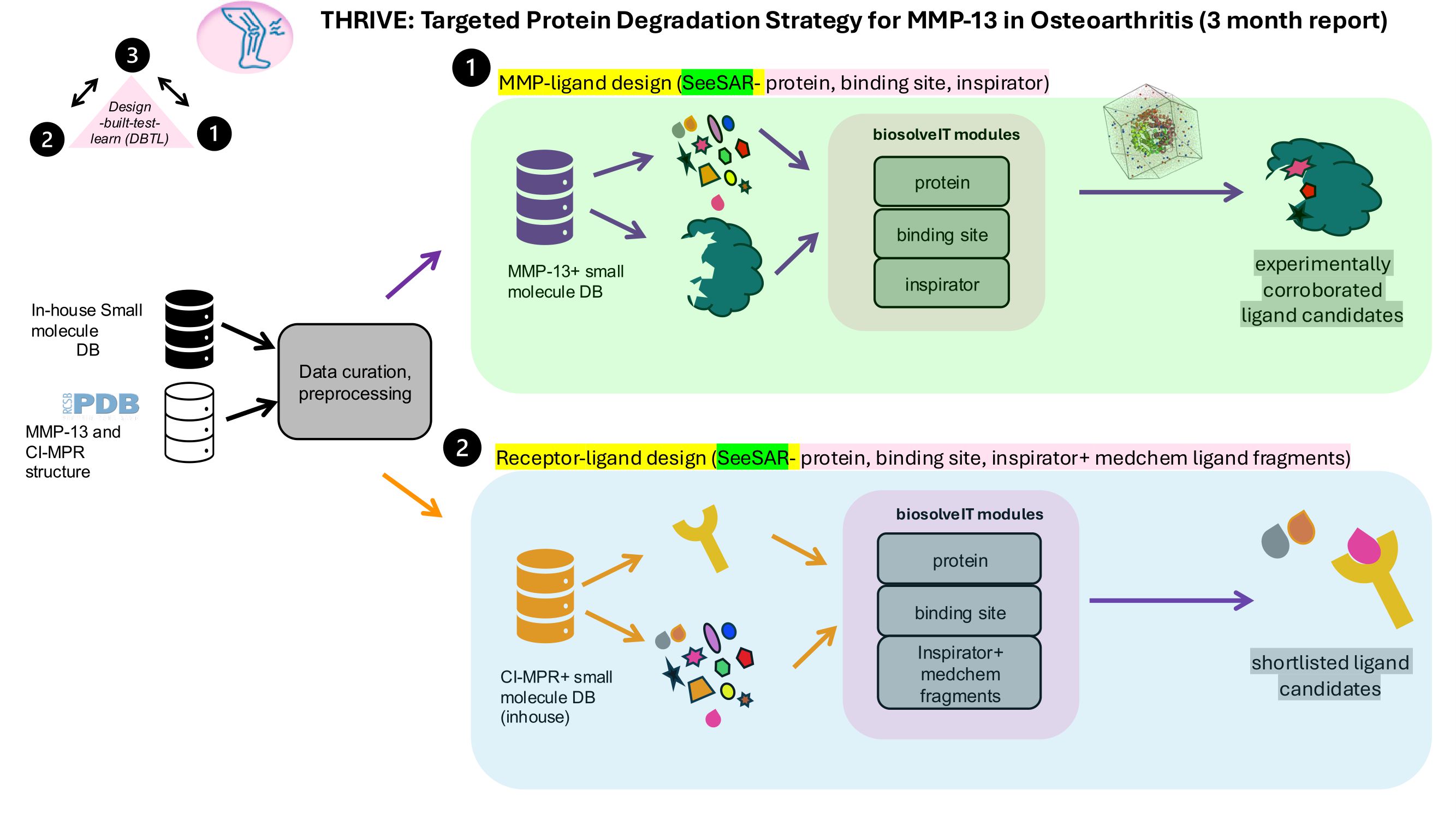During the first three months of the THRIVE project, we achieved significant progress in two key design objectives. For MMP-13, we applied proteins, binding site and inspirator modules to indetify promising ligands from our inhouse chemical library. The 30 top hits are being evaluated using molecular docking, molecular dynamics and Free Energy Perturbation (FEP) simulations to ensure favorable binding and stability leading to selecting ~ 10 candidates. Simultaneously, we focused on designing LYTAC-compatible ligands targeting the cation-independent mannose-6-phosphate receptor (CI-M6PR), a key lysosomal trafficking receptor. We screened compounds using similar procedure as mentioned before to filter candidates based on receptor binding potential and synthetic accessibility, resulting in 10 viable scaffold candidates. These two parallel efforts provide a robust foundation for generating functional MMP-13-targeting LYTACs in upcoming stages.
After 3 months, Karuna Anna has achieved the following milestones:
- As we had already reduced our ligand pool to 1,000 candidates through prior experimental screening, we opted to bypass high-throughput virtual screening (HTVS) at this stage. Instead, we employed the Inspirator module, along with Binding Site and Protein modules, to explore alternative binding pockets and generate novel ligand fragment predictions. The HYDE scoring system provided valuable estimates of binding affinities, while steric hindrance prompts, and cavity predictions helped refine the structural fit of our candidates. This integrative computational approach enabled us to fine-tune the ligand list with greater precision. This gave us results that corroborate experimental results, especially the predicted new ligand fragments.
- Our CI-MPR ligand design followed a workflow similar to that of Milestone 1, with additional enhancements. We integrated medicinal chemistry fragment libraries with the Inspirator module to propose high-confidence ligand candidates. HYDE-predicted affinity ranges were used to prioritize and shortlist the most promising compounds. To further refine the selection, molecular dynamics (MD) simulations are currently underway to assess the stability and binding behavior of these candidates. This phase of the project is ongoing and represents an important intermediate step toward identifying optimal ligands for LYTAC development.
- We have not matured enough to reach this milestone.





